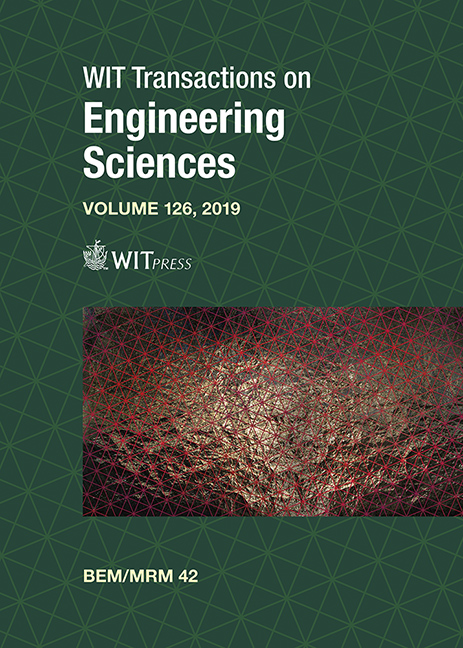COUPLING OF THE BOUNDARY ELEMENT METHOD WITH A HYBRID METHOD FOR INVERSE STRESS ANALYSIS OF PIPELINES
Price
Free (open access)
Transaction
Volume
126
Pages
12
Page Range
137 - 148
Published
2019
Size
676 kb
Paper DOI
10.2495/BE420121
Copyright
WIT Press
Author(s)
CIBELE CORNEJO JACINTO PORTELA, AMANDA JAREK, LUIZ ALKIMIN DE LACERDA
Abstract
The aim of this work is to develop a numerical tool for structural inverse analysis to obtain boundary conditions and their location. The inverse analysis is performed through an optimization process having as restrictions the information obtained from a direct analysis, representing data which could be obtained from surface monitoring of pipelines. Thus, the numerical models comprehend the solution of two problems: the direct one in which the boundary element method (BEM) is used to obtain the displacements and tractions in the structure, and the inverse problem, in which two optimization models were implemented. The first approach uses the genetic algorithm (GA) method associated with the BEM (GA-BEM), minimizing the residuals between the calculated and the “monitored” relative surface displacements. The second approach is a hybrid method (HM) in which the GA is associated with the Newton–Raphson method for performing the inverse analysis with the BEM (HM-BEM). All tests demonstrated the efficiency of the numerical tools for structural inverse analysis, with the HM approach showing lower computational cost and better accuracy.
Keywords
boundary element method, inverse analysis, genetic algorithm, Newton–Raphson method, elasticity, hybrid method





